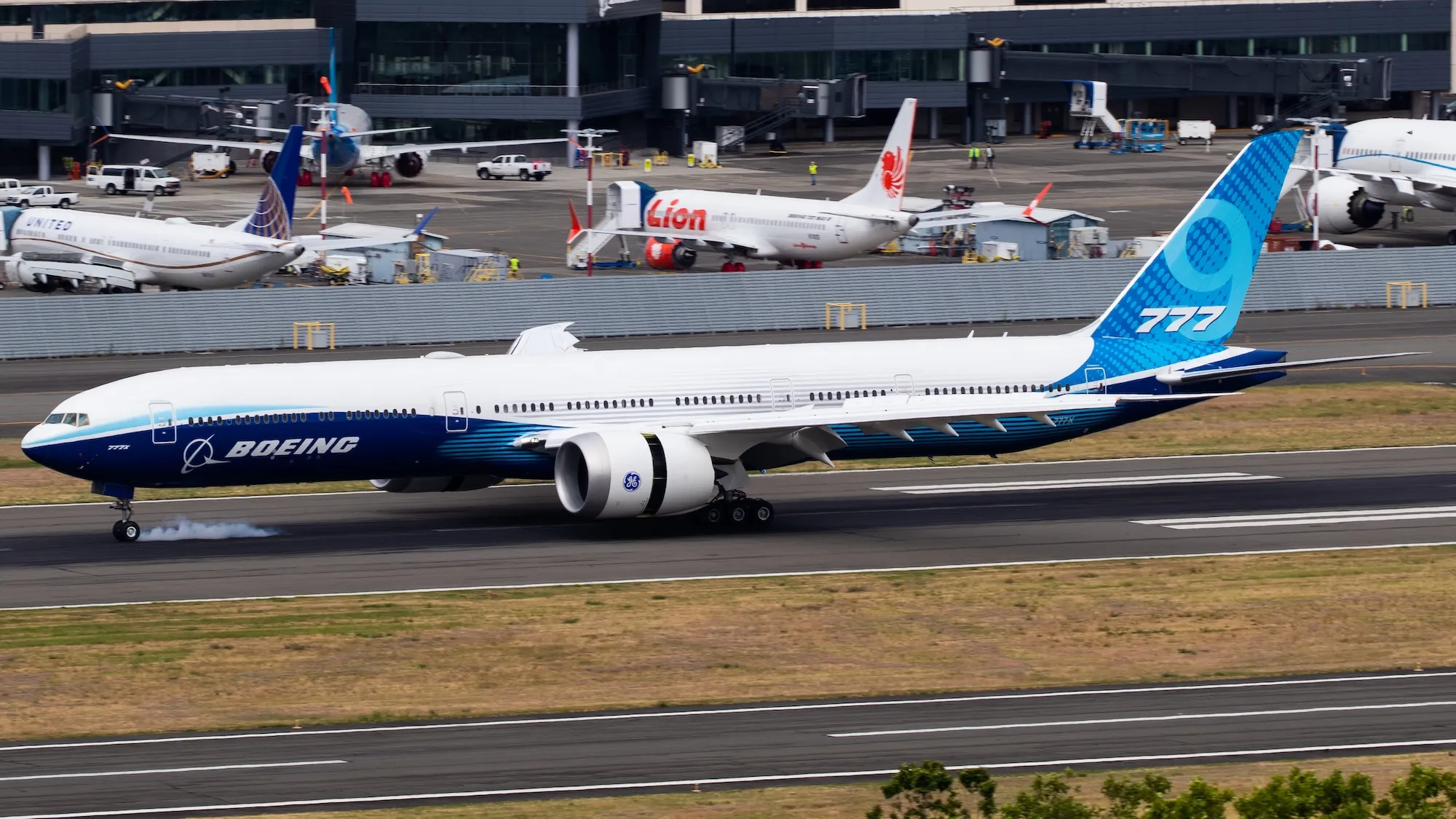DALLAS — The current US trade policy presents an opportunity to analyze how geopolitical pressure might influence aircraft procurement decisions among smaller nations.
A first assumption would imply that countries facing higher tariffs would import more American products to improve their bilateral trade balances. Still, we know that the commercial aviation industry is fraught with complexities where strategic considerations, delivery constraints, and existing relationships play binding and winding roles.
Trade Balance in Aviation
Trump's "reciprocal tariff" policy targets countries with which the US runs trade deficits, imposing duties ranging from 10% to 49% based on bilateral trade imbalances. The underlying theory suggests that smaller countries facing these tariffs would seek to offset them by purchasing high-value American products, such as commercial aircraft. Boeing planes, with individual values ranging from US$55 million for a 737 MAX to over US$400 million for a 787-9, represent ideal "large ticket items" that could significantly impact trade statistics.
The mathematical methodology that underpins these tariffs determines the rates required to reduce bilateral trade deficits, taking into consideration import elasticity and price pass-through effects. For smaller countries, this provides a strong incentive to increase American imports, particularly in high-value sectors such as aerospace.
Kazakhstan: Boeing Partnership with Delays
Air Astana has maintained its commitment to Boeing, despite prolonged delivery delays, with three Boeing 787-9 aircraft leased from Air Lease Corporation now scheduled for delivery in mid-2026. Initially expected in early 2025, these delays have forced the airline to defer its planned US routes.
The airline's earlier commitment to 30 Boeing 737-8 aircraft for its subsidiary FlyArystan, valued at US$3.6 billion at list prices, demonstrates how smaller countries can use aircraft orders as diplomatic tools. Kazakhstan faces a 25% tariff under Trump's current policy, down from the initially proposed 27%.
Vietnam: Strategic Pivot to Boeing
An order for 50 Boeing 737-8 aircraft is still outstanding for Vietnam Airlines. With a 46% tax that was eventually lowered to 20% after trade talks, the agreement, which was first reached in 2023, became a top priority for the nation. Vietnamese officials would later state that obtaining American aircraft was "essential for addressing Vietnam's significant surplus" with the US, and that these purchases were indeed considered to address trade balance concerns.
Additionally, trade talks and the financing deal for 50 narrow-body aircraft in April 2025 between the Vietnamese carrier and Vietcombank suggest a direct relationship between Vietnam's acquisition choices and US tariff policies. Since the airline uses A320 and A321 aircraft for its narrow-body operations, the Boeing order represents a significant strategic change.
Thailand: Windfall for Boeing
Although it was completed in December 2023 and publicized in February 2024, Thai Airways' order for 45 Boeing 787-9 Dreamliners predates the current tax regime in effect. The expectation of trade pressure may have influenced it. The agreement, estimated to be worth US$10.8 billion, followed the airline's rejection of Airbus A350-900 offers due to disagreements with Rolls-Royce over engine costs.
With Thailand facing a 36% tariff under the current policy, additional Boeing orders may emerge. Industry reports suggest Thai Airways could purchase up to 80 additional Boeing aircraft as part of ongoing trade negotiations, potentially representing one of the largest tariff-induced aircraft orders.
Production Constraints Limit Competition
Another thread in the discussion is Airbus' production constraints, which may benefit Boeing in smaller markets. The European manufacturer's single-aisle production is sold out through the remainder of the decade, with waiting lists extending beyond 2030. This supply shortage creates opportunities for Boeing to secure orders from airlines that might otherwise prefer Airbus aircraft.
For smaller countries facing tariff pressure, Boeing's relatively shorter delivery timelines become a strategic advantage. While Airbus might offer more attractive pricing or operational characteristics, availability trumps preference when airlines need to demonstrate trade balance improvements quickly.
Chinese Competition in Select Markets
The emergence of COMAC's C909 regional jet in markets like Laos demonstrates how smaller countries might bypass both Boeing and Airbus entirely. Lao Airlines' adoption of the C909, delivered in March 2025, represents the first Chinese commercial aircraft deployment in the country. On June 1, 2025, Air China (CA) operated the first international route with the C909 aircraft.
Of course, COMAC's limited production capacity and range restrictions prevent it from competing directly with Boeing's larger aircraft categories. COMAC is still an market afterthought, but the though is there.
On a smaller scale, Myanmar's complex political situation has led to extensive use of ATR turboprop aircraft, with the military utilizing these French-made planes for transport operations—a clear example of how geopolitics can override economic considerations in aircraft procurement decisions.
Air Lease Corporation: The Intermediary Factor
An essential middleman in enabling Boeing orders for smaller nations is Air Lease Corporation (ALC). The lessor provides nations with access to Boeing aircraft by not making direct acquisitions, owning 30 Boeing 787s, and having a backlog of 130 Boeing 737 MAXs.
In Kazakhstan, where Air Astana leases rather than buys its three Boeing 787-9 aircraft, ALC's involvement is more noticeable. This model preserves fleet freedom while enabling smaller nations to show advances in their trade balance. Serving 118 airlines in 60 countries, ALC's global presence makes it a crucial enabler of tariff-driven aircraft purchases.
The China Factor: Opportunity Through Disruption
Smaller nations now have access to aircraft that were initially intended for Chinese carriers, as a result of Boeing's strained relationship with China, which led to deliveries being suspended in April 2025 due to trade issues. The impact on Boeing's overall business remains minimal, as the 130 unfulfilled orders for Chinese airlines account for only 2% of Boeing's total backlog.
However, the disruption creates inventory that Boeing must reallocate. CEO Kelly Ortberg indicated that Boeing was "assessing options to re-market 41 of the already built planes to other customers as there was high demand from other airlines".
Impact on Boeing's Business
The orders from Kazakhstan, Vietnam, and Thailand total around 125 aircraft valued at US$18.4 billion, accounting for barely 1.9% of Boeing's backlog of more than 6,500 aircraft. This implies that although individual orders could have a significant impact on bilateral commerce, Boeing's position in the global market isn't much changed by them.
Boeing had 6,528 outstanding orders as of May 2025, equivalent to approximately 11.5 years of production at current rates. Instead of securing orders, the company needs to focus on delivering them efficiently while maintaining quality requirements.
Future Outlook: Limited but Strategic Impact
In the first half of 2025, Airbus had a modest lead over Boeing in aircraft deliveries (284 to 280), and it continues to dominate the narrowbody segment with high demand for its A320neo series. The European planemaker also has an advantage in total backlog, with approximately 8,720 jets on order compared to Boeing's 6,319. Airbus witnessed robust order activity in March alone, with 221 gross orders, although the complete H1 count is still pending.
Boeing, meanwhile, led H125 in gross orders for the first half of the year with 668 units, boosted by large deals with Qatar Airways (160 widebodies firm + 50 options) and Pegasus Airlines (100 firm MAX 10s plus 100 options, with delivery beginning in 2028). While Airbus continues to dominate the single-aisle market, Boeing is experiencing a resurgence in wide-body aircraft, particularly with the 787 and 777X programs.
Will the aircraft manufacturing duopolistic status quo change in the next six months? The evidence suggests that Trump's tariff policy has created modest pressure for smaller countries to favor Boeing aircraft, but the impact remains limited by several factors:
- Delivery Constraints: Even willing customers must wait a considerable amount of time due to Boeing's production limitations. Due to the FAA's existing ceiling of 38 aircraft per month for the 737 MAX program, Boeing is unable to capitalize on demand driven by tariffs.
- Existing Relationships: Airlines like Philippine Airlines, which operates primarily Airbus aircraft, show a limited inclination to switch manufacturers purely for trade balance reasons. Fleet commonality and operational efficiency often outweigh tariff considerations.
- Market Size Limitations: Most smaller countries lack the scale to absorb large numbers of aircraft. Cambodia, Laos, and Myanmar combined represent a minimal demand for aircraft compared to major markets like the US, China, or Europe.
The tale of tariffs and aircraft orders among smaller nations is one example of how geopolitical pressure can present surface opportunities, without fundamentally altering market dynamics. While countries such as Vietnam and Thailand have shown a propensity to favor Boeing in reaction to trade pressure, the impact on Boeing's global operations remains strategic but economically limited.




